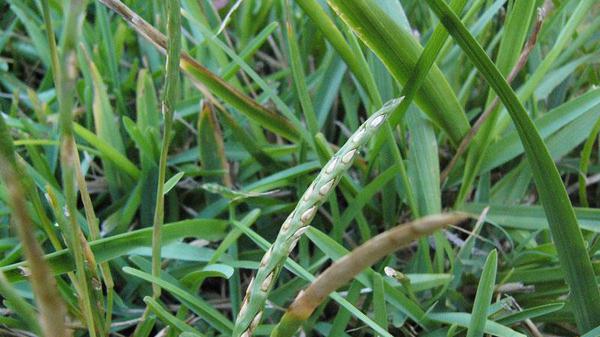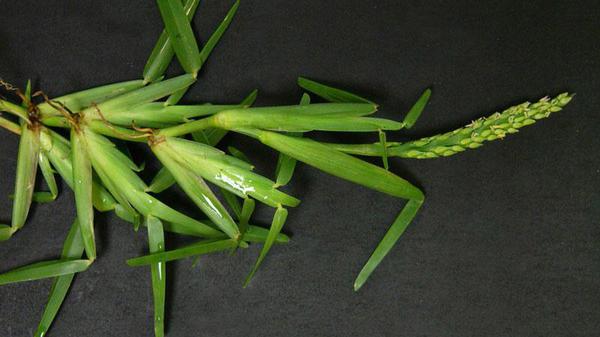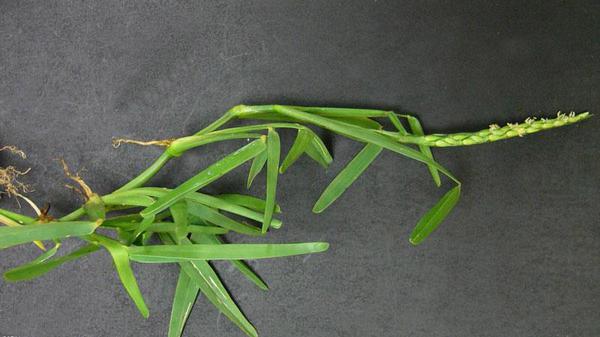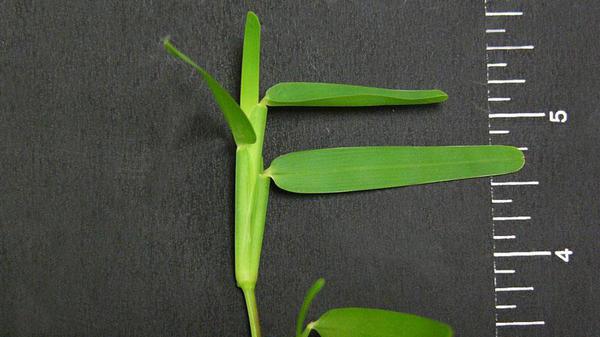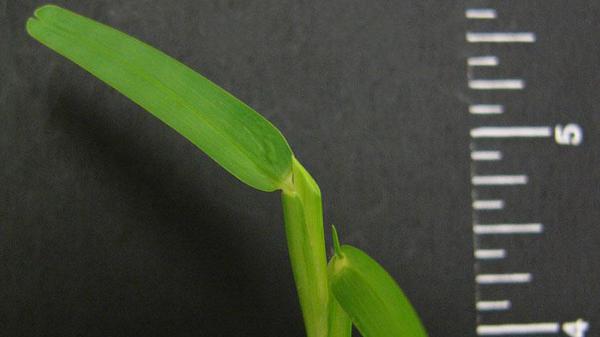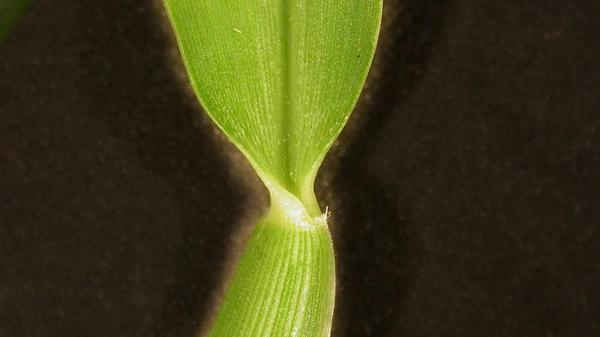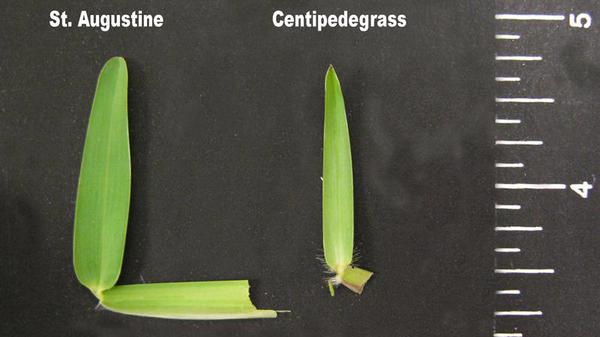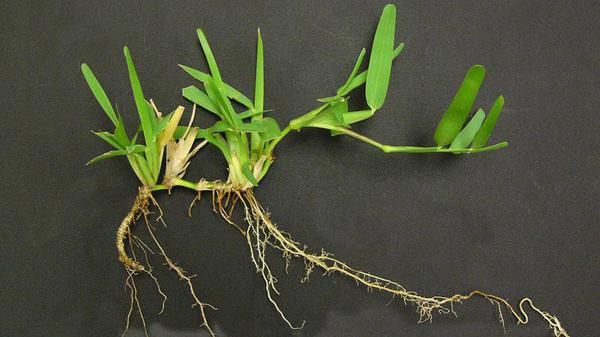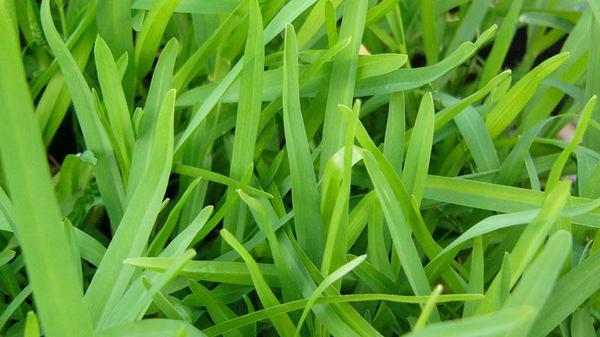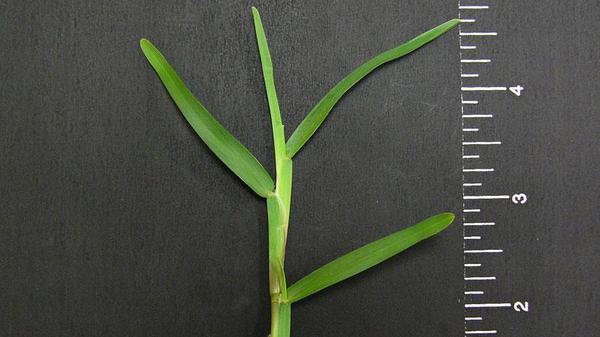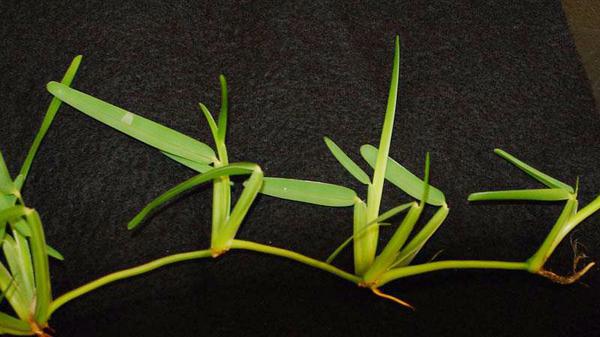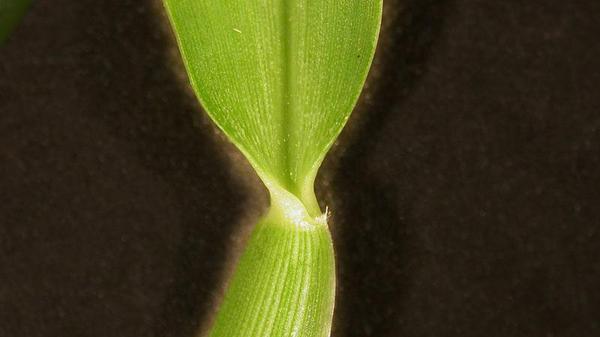Description
St. Augustinegrass (Stenotaphrum secundatum) is a warm-season grass with medium density and medium to dark green color. Of all the warm season grasses, it is the least cold tolerant and has the coarsest leaf texture. St. Augustinegrass grows best in warm, humid areas that are not exposed to long periods of cold weather. In fact, its lack of cold tolerance is the major limiting factor in determining its use in North Carolina. Centipedegrass can often be confused with St. Augustinegrass. However, centipedegrass has alternating leaves at the nodes whereas St. Augustinegrass has opposite leaves at the nodes. Centipedegrass also has a more pointed, slenderer leaf blade than St. Augustinegrass. Both leaf blades are V-shaped in cross section, but that of St. Augustinegrass has a more obviously boat-shaped tip.
Lawn Maintenance
- For a month-by-month St. Augustinegrass lawn maintenance calendar, see St. Augustinegrass Lawn Maintenance Calendar, AG-540.
Species Data
- SEEDHEAD / FLOWER
- VERNATION TYPE
- leaves folded in the bud
Figure 5
- leaves folded in the bud
- LIGULE TYPE
- GROWTH SEASON / LIFE CYCLE
- warm season turf
- AURICLE TYPE
- absent
Figure 7
- absent
- LEAF BLADE TIP SHAPE
- LEAF BLADE WIDTH
- 0.16 - 0.4 inches (4 - 10 mm) wide
- STOLON PRESENCE
- present; stout
Figure 12
- present; stout
- RHIZOME PRESENCE
- absent
- COLLAR TYPE
- continuous; not hairy, constricted
Figure 13
- continuous; not hairy, constricted
- SHEATH MARGIN
- open; sheath is slightly hairy along edges and toward top
Figure 5
- open; sheath is slightly hairy along edges and toward top
Publication date: Aug. 22, 2022
N.C. Cooperative Extension prohibits discrimination and harassment regardless of age, color, disability, family and marital status, gender identity, national origin, political beliefs, race, religion, sex (including pregnancy), sexual orientation and veteran status.

